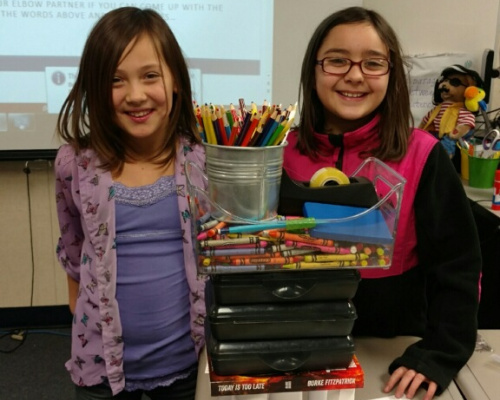Girls and STEM: Building our next generation of engineers and scientists
Date
As an instructional designer, I spend a lot of time thinking about how the way we teach and engage students will have an impact–not only in immediate learning gains, but also the long-term influences on life and career readiness.
My recent work at Clarity led me to start looking closer at why and how students get interested in math and science, and how that translates into future career paths in STEM-related fields of study. I was especially interested in exploring programs and resources that target traditionally underrepresented populations, such as girls, and provide STEM enrichment.
School Spotlight
One school that understands the value of STEM enrichment is Sunset Elementary School in Airway Heights, WA. With funding through a competitive Federal 21st CCLC grant, they are currently in their second year of a five-year grant for an afterschool program that serves 120 students at two sites. Students are selected for the free program based on MAP scores in reading and math, thereby targeting the most at-risk students who might benefit most from STEM enrichment.
During the two-hour daily program, students participate in project-based STEM activities as well as recreation. In addition to being provided a safe environment after school, students at Sunset Elementary engage in real-world problem solving guided by curriculum specialists. Open-ended questions give students an opportunity to explore and build confidence in their scientific, math, and engineering abilities. Jeani Struss, Sunset’s vice principal who also oversees the program, explains:
"An example of a past lesson for primary kids is Hey Diddle Diddle the Cat Has Lost His Fiddle. Students were challenged with the question, ‘Can you create a new instrument for him using these given materials?’ Before this, they learned background information on how sound vibrations are carried. Kids have to list the materials they need and sometimes they are given a budget to purchase materials, so math gets involved as they place their order.
This week, after learning about how bridges are supported, they experimented with making an object with columns out of index cards to see which team could create an object that held the most items from around the classrooms without collapsing. Next week they will have a limited amount of materials and they will need to design a structure to hold 100 pennies.”
While the program does not target girls specifically, they are equally represented and given opportunities for leadership roles within their student groups. Mrs. Struss points out, “Most of our teachers are women who are leading STEM so I think girls have a good role model.” This supports a recent blog post on Edutopia, which asserts that correcting the negative perceptions that girls develop at a young age can lead them to embrace math and science when they reach high school. When all students are exposed to science and technology and are equally encouraged to study those disciplines, those with talent and a genuine interest in those fields will be able to develop that interest.
It's also clear that this program aspires to more than just learning gains. Self-confidence and leadership are core goals of the curriculum. Mrs. Struss explains:
"The reason we wrote the grant based around STEM is that we knew our low achieving kids would be interested and engaged, and in the process develop their math and literacy skills in a way that they were not being given the opportunity to do during the day. We also want them to feel successful and build that ‘I can’ attitude which we hope carries into the school day.”
They provide an excellent example of a school that is preparing students with life and career readiness skills for their future.
Putting It Into Practice
My takeaway is the understanding that building the foundation for STEM careers begins with early exposure, positive role models, and developing students’ confidence in their math and science abilities. From an instructional design perspective, this requires inquiry-driven investigations and open-ended questions to engage students in authentic problem solving. Thoughtful STEM instruction will not only help students to learn, but might also plant the “seed of interest” that could grow into an exciting and rewarding STEM career.

